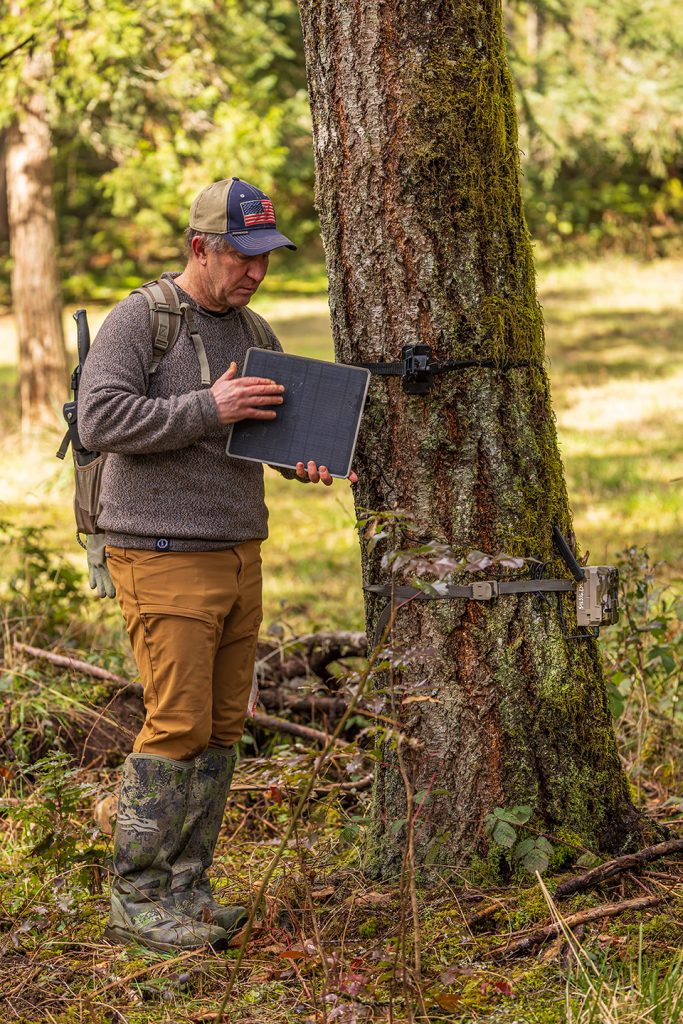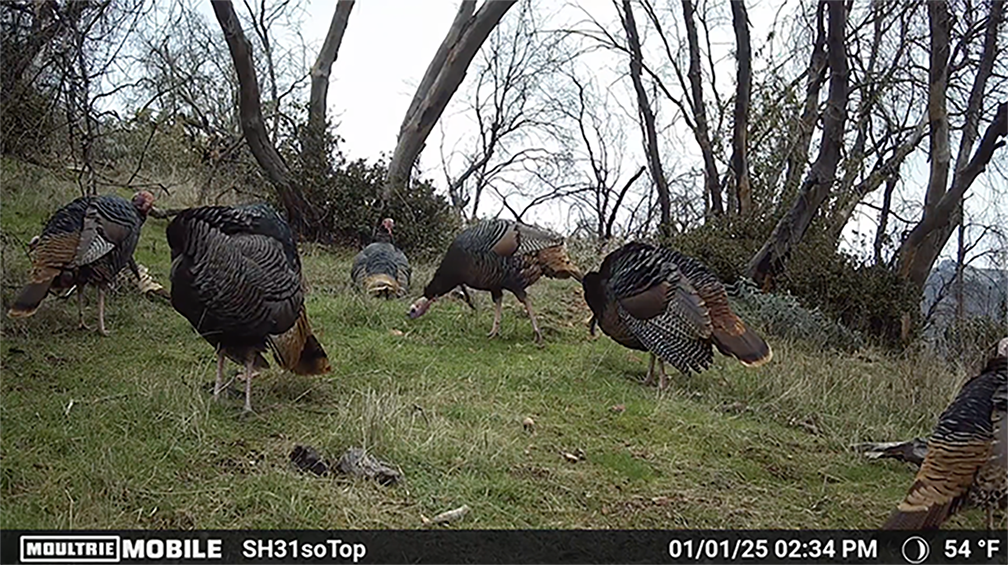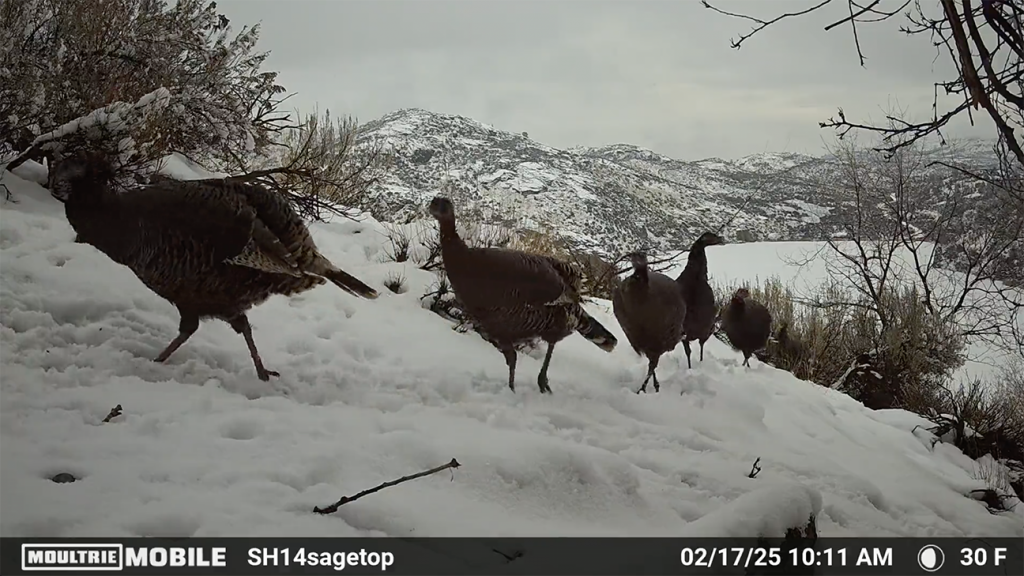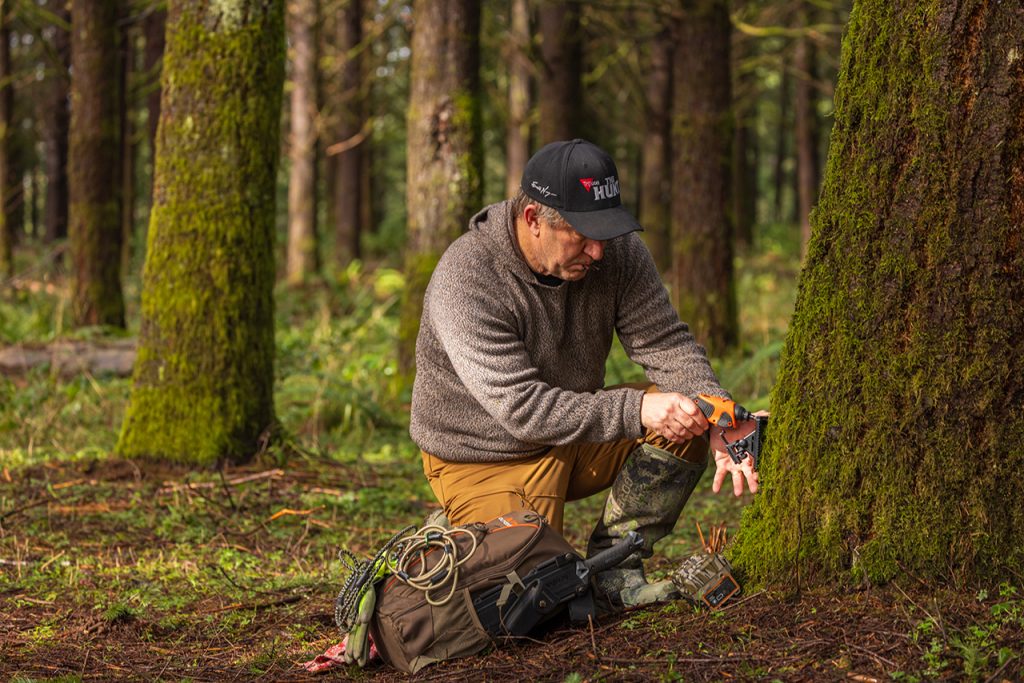Year-Round Trail Cameras
In the first Proving Grounds column a year and a half ago I touched on the value of using trail cameras to scout for turkeys prior to the spring season. At the time, I had some 60 trail cameras set. Today that number has grown to 134.

Fifty-four cameras are set specifically for turkeys. They span over 800 miles in three states. Because turkeys largely thrive in areas with cell coverage, almost all of the trail cameras I run are Moultrie Mobile. In open habitats, the cameras are rigged with solar panels. Some I’ve checked only once in two years. That setup has saved me time.
In forests and river bottoms where deciduous trees carry large leaves in the spring, summer and fall, clipping overhanging limbs will let in sunlight and keep cameras powered on. In coniferous forests, adjusting the position of solar panels or relocating cameras with the changing seasons, is necessary.
All trail cameras are set to video mode. If there’s a thumbnail that might look informative, I’ll download the video. A 15-second video reveals much more than a still image or even a series of still images.
At key times of the year I add Stealth Cam DS4K trail cameras and set them on QHD video mode, programming them for at least a two- minute run time. These long, high-resolution videos are great for learning about courting behaviors, hatch rates, winter flock dynamics, vocalizations, predators and more.
I’ve caught toms strutting and gobbling every month of the year. Some toms I’ve been watching for eight years. Those are off limits to me and my hunting buddies; there’s too much to learn from them.


This time of year, bachelor flocks are forming, largely of same age-class toms, but not always. Last August, seven 2-year-old toms joined three 5-year-old toms I’ve been closely observing. They stayed together until February 21. That’s when the breeding games got serious. They’d been fighting and gobbling for nearly two weeks prior, but when courtship turned serious, the three old toms ran off the younger birds.

Midsummer is when toms of all ages, and even hens with late hatched poults, head to fields and mountain meadows to hunt grasshoppers and other high-protein insects. Soon they’ll be feasting on rose hips, plucking wild berries from vines, and nibbling on grass as it greens up.
I often position trail cameras close to the ground, even strap them to big rocks or chunks of wood that can be moved. This low point of view captures unique sounds that have expanded my understanding of how diverse turkey vocabulary is. And not just toms, but poults, hens, jakes, winter flocks, and beardless flocks, along with courtship and breeding activities. You’ll even know when a predator is near.
Low trail camera positioning also allows you to identify individual birds. Two hens I’ve been capturing for seven years, always travel the same trails to nest high in the mountains. They return with their brood in early summer to where they stay until the following nesting season.
I’ve been able to keep track of individual toms, too. On one timbered ridge, three toms have ruled for five years. They seem to do most, if not all, of the breeding. No matter how many toms join them in fall and winter, or how many show up in the spring, the Three Amigos always run them off before breeding commences. I’ve seen this trend with mature toms in numerous areas. And not all of the dominant toms have he longest spurs or beards.
Trail cameras have captured toms standing in one place for over eight hours, preening, escaping the heat, or huddled under trees during rainstorms. I’ve seen hens strutting and fighting, multiple times. And hearing what seems to be a jake’s first gobble reminds me of when I was learning to work turkey calls 39 years ago.
As a former biology teacher and animal behavior nut, nothing has taught me more about turkey populations and behaviors than trail cameras. I spend a lot of time photographing, watching and documenting turkeys, but we can only be in one place at a time. Imagine being in over 50 places at once.
Capturing dozens of toms gobbling on the same day, hundreds of miles apart as the spring season approaches is the ultimate reward. It confirms all the off-season work paid off and you learned where birds will be, when, but more importantly, understand why. Trail cameras play a big part in my fall turkey hunting too, whether I’m calling toms, hunting with my dogs, or targeting overpopulated beardless flocks.
The only thing I see increasing the educational value trail cameras already offer, would be a model featuring live video. But if I want to stay married, I hope that technology isn’t created in my lifetime. And if it is, please don’t tell me.
For signed copies of Scott Haugen’s popular book, Western Turkey Hunting: Strategies For All Levels visit scotthaugen.com. Follow Scott on Instagram and Facebook.